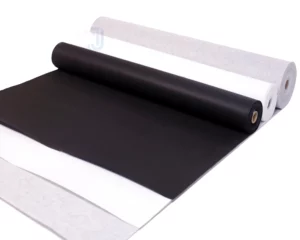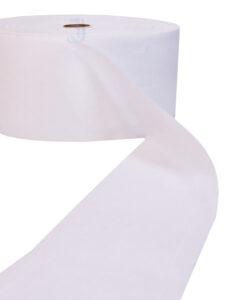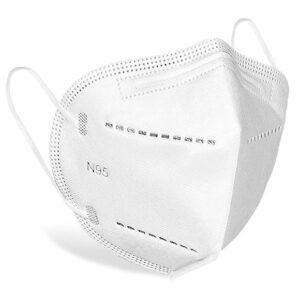
Uses of Non Woven Polyester Felt
NONWOVEN FELT INCEPTION Felt Nonwovens were one of the oldest textile material to be used in
Non-woven interlining plays a crucial role in the garment industry, providing structural support, shape retention, and enhanced aesthetics to various types of garments. It is a versatile material that is used in different stages of garment production. Here are some common uses of non-woven interlining in the garment industry:
Non-woven interlining is commonly used in the construction of collars and cuffs. It provides stiffness and shape to these areas, ensuring that they maintain their structure and appearance. Non-woven interlining can be fused or sewn into the collar and cuff sections to add stability and durability.
Non-woven interlining is utilized in waistbands, especially in trousers, skirts, and pants. It helps to reinforce the waist area, providing support and preventing the fabric from stretching or sagging. Non-woven interlining adds stability to the waistband and helps it retain its shape during wear.
Non-woven interlining is often incorporated into the front plackets of shirts, blouses, and dresses. It provides structure, stiffness, and a smooth appearance to the placket area. Non-woven interlining enhances the functionality of buttons and buttonholes, ensuring a neat and well-finished front closure.
Non-woven interlining is used in the construction of lapels in jackets, blazers, and coats. It adds structure and shape to the lapel area, creating a crisp and defined appearance. Non-woven interlining also enhances the lapel's ability to retain its shape and roll, contributing to the overall tailored look of the garment.
Non-woven interlining is employed in the creation of pocket flaps on jackets, blouses, and pants. It provides support, stiffness, and definition to the pocket flap, allowing it to maintain its shape and prevent sagging. Non-woven interlining also contributes to the durability of the pocket flap.
Non-woven interlining is sometimes used in the hemlines of garments, especially in skirts, dresses, and trousers. It helps to stabilize the hem, preventing it from stretching or distorting over time. Non-woven interlining enhances the overall appearance of the hemline, providing a neat and professional finish.
The advantages of non-woven interlining in the garment industry include its lightweight nature, ease of application, and compatibility with different types of fabrics. Non-woven interlining can be fused, sewn, or a combination of both, depending on the specific garment requirements. It provides stability and structure without adding excessive weight or bulk to the garment.
Additionally, non-woven interlining is available in different thicknesses and stiffness levels, allowing garment manufacturers to choose the appropriate interlining based on the desired garment characteristics.
Overall, non-woven interlining is a vital component in the garment industry, contributing to the quality, appearance, and functionality of various garments. It enhances the structural integrity of collars, cuffs, waistbands, plackets, lapels, and pocket flaps, ensuring that garments maintain their shape, durability, and aesthetic appeal.

NONWOVEN FELT INCEPTION Felt Nonwovens were one of the oldest textile material to be used in

Applications and Advantages of Hot Air Through Non Wovens Hot Air through bonding is a technique

Role of Face Mask in reducing Transmission of COVID-19 The novel widely spreading Corona virus has
Near Cement Godown,
Industrial Area-C,
Kanganwal, Ludhiana –
141014, Punjab, India
Copyright © 2014-2023 Jhanji Textiles. All Rights Reserved | Created by Digital eSearch